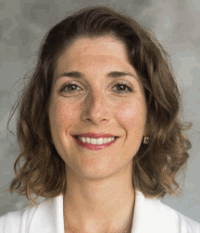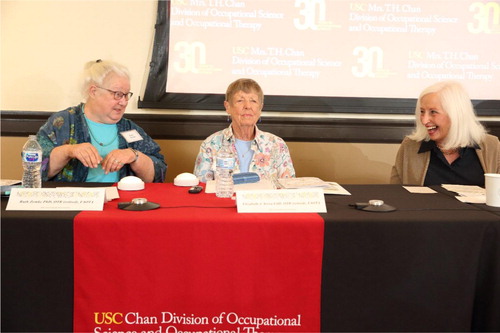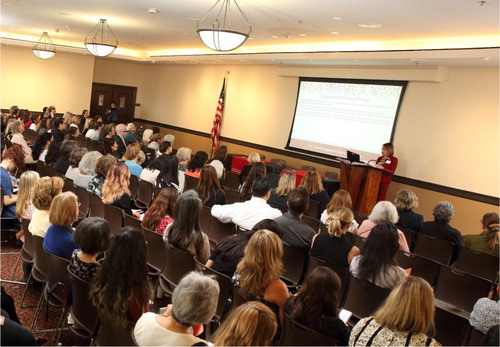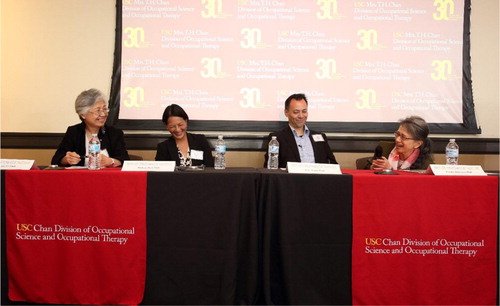This special issue of the Journal of Occupational Science culminates efforts to mark the 30th anniversary of the founding of occupational science as an academic discipline. The issue was inspired by the 26th Occupational Science Symposium, which was held by the University of Southern California’s Chan Division of Occupational Science and Occupational Therapy (USC Chan) on September 19, 2019. That event, organized around the theme “Celebrating the Past, Mobilizing the Future”, provided an opportunity to reflect on the origins and evolution of occupational science and the inquiries it has generated at USC Chan and beyond. This special issue contains papers given at the 2019 USC Chan Occupational Science Symposium as well as contributions inspired by and related to the Symposium theme. Following a brief history of the USC Chan Occupational Science Symposium, I introduce the contents of this special issue and reflect on the implications of the authors’ ideas for the discipline’s continued growth.

Rebecca M. Aldrich
History of the USC Chan Occupational Science Symposium
In 1988, the University of Southern California’s then Department of Occupational Therapy initiated an annual event to celebrate the newly formed discipline of occupational science (USC Chan Division of Occupational Science and Occupational Therapy, Citationn.d.). As the world’s longest running occupational science forum, the USC Chan Occupational Science Symposium has had a twofold purpose: to share ideas generated within occupational science with clinical, community, and interdisciplinary partners, and to catalyze further development within the discipline. Since the late 1980s, the symposium has provided a space to address issues internal to the discipline, such as its relationship to the profession of occupational therapy (1991, 1992, and 2002 symposia) or its broader focus and scope (1995 and 2004 symposia). The symposium has also facilitated explorations of interdisciplinary topics, including autism and sensory integration (2008, 2012, and 2013 symposia), health care and rehabilitation science (2003, 2006, and 2009 symposia), and narrative (1993 and 1997 symposia), to name a few.
The USC Chan Occupational Science Symposium has a tradition of inviting keynote speakers external to the field to help spur development within the discipline. This tradition is an outgrowth of the generative ‘polymath’ gatherings that were essential to the conceptualization of USC Chan’s PhD program in occupational science, which launched in 1989 (Yerxa, Citation2020). Esteemed external keynote speakers have included Jerome Bruner, Mihalyi Csikszentmihalyi, Stephen Hawking, Jane Goodall, Antonio Damasio, Andrew Abbott, and Carol Ryff. The USC Chan Occupational Science Symposium also features a lecture named in honor of Wilma West, a distinguished USC alumna whose career involved leadership positions in both the American Occupational Therapy Association and American Occupational Therapy Foundation. Wilma West lecturers have included occupational scientists and occupational therapists from many parts of the world, including the United States, Sweden, Australia, and New Zealand. As is evident in , and , which are from the 2019 event, the symposium has offered a rigorous and engaging experience across its many iterations. Information about all 26 USC Chan Occupational Science Symposia can be found at https://chan.usc.edu/symposium
Figure 1. Professors Emereti Ruth Zemke, Elizabeth Yerxa, and Florence Clark discuss the formation, early years, and evolution of occupational science at the 2019 USC Chan Occupational Science Symposium. (Photo credit: Glenn Marzano)

This Issue’s Contents
This special issue begins with three retrospectives on the evolution of occupational science. Calhoun’s (Citation2021) paper offers insight into how a “budding occupational scientist” is making sense of the discipline’s core tenets, global development, and relationship to occupational therapy, based on a reading of existing literature. Calhoun’s exploration culminates with recommendations that the discipline redouble its commitments to critical reflexivity, inclusivity, interdisciplinarity, and integrating occupational science knowledge into occupational therapy education, echoing previous scholars’ calls. Lawlor’s (Citation2021) paper, which was initially presented as a lecture at the 2019 USC Chan Occupational Science Symposium, takes a narrative tack to making sense of selected developments within occupational science, drawing on sociologist Andrew Abbott’s (Citation2001, Citation2004) notion of fractal distinctions and anthropologist Michael Jackson’s (Citation1998) concept of complementary poles. Based on her analysis, Lawlor encourages occupational scientists to think about what is ‘at stake’ in attempts to (re)construct the discipline, and to consider how various perceived ‘turns’ in the science relate to its members’ moral commitments and founders’ original visions. Rounding out this first set of papers, Hocking (Citation2021) describes shifts in conceptualizations of the environment – and the relation of people and occupations to it – since the discipline was founded. Originally presented as the 2019 Wilma West Lecture at the USC Chan Occupational Science Symposium, Hocking’s paper examines several assumptions, drawing links and marking distinctions between early occupational science understandings about humans acting on their environments and more recent situated and transactional perspectives on person-environment-occupation relations.
The next set of three papers takes a more conceptual focus, balancing retrospective reviews with prospective proposals. Kiepek (Citation2021) reflects on how constructions of occupation have come to be increasingly scrutinized, supported in part by occupational scientists’ uptake of critical theoretical perspectives. Urging critical reflexivity about the discursive choices that shape what is considered to be ‘knowledge’ of occupation, Kiepek calls for prospective attention to the overt and covert ways occupational scientists write and talk about occupation. Kiepek’s paper locates disciplinary scholarship within societal power structures, encouraging recognition that knowledge of occupation is situated, provisional, and generated by contextually embedded social actors. Motivated by calls to increase the discipline’s transformative capacity and commitment to inclusion and justice, Peters and Galvaan (Citation2021) present a scoping review of how ‘opportunity’ has been theorized in occupational science and occupational therapy literature. Their review illustrates varying ways of conceptualizing opportunity in relation to capabilities, options for participation, and social transformation; however, the authors note an overall lack of theorizing on the concept of opportunity itself. Peters and Galvaan end their paper with suggestions for further theorizing opportunity, and Pereira (Citation2021) begins this work in his commentary on their paper. Pereira’s commentary adds clarity to the distinction and relationship of opportunity and capabilities and introduces Axel Honneth’s (Citation1992, Citation1995, Citation2001) Theory of Recognition as one way to consider the prerequisites necessary for humans to have and realize opportunities.
The final set of papers aims to chart forward paths for the discipline. Building on Baranek’s lecture from the 2019 USC Chan Occupational Science Symposium, Baranek et al. (Citation2021) propose meliorism and knowledge mobilization as useful concepts for orienting and maximizing the impact of occupational science research and practices. They describe the genesis of their ideas, outline meliorism’s relation to pragmatism, and argue that a melioristic orientation requires explicit efforts to mobilize knowledge. To illustrate their points, they offer examples of the ways in which a melioristic intent and commitment to knowledge mobilization manifests across varied inquiries by USC Chan researchers. Baranek et al. end with several questions and discussions of potential critiques, paving the way for others in the discipline to join the conversation and examine the relevance of meliorism and knowledge mobilization for occupational science in other contexts. Continuing efforts to chart forward paths for the discipline, Park et al. (Citation2021) describe how adopting social network analysis theories and methodologies can complement and extend understandings about occupation. Drawing from Valente’s keynote lecture at the 2019 USC Chan Occupational Science Symposium as well as ongoing research collaborations between Park, Lawlor, and Solomon, the paper illustrates the coupling of ‘experience-near’ narrative and ethnographic methods with ‘experience-distant’ social network analysis. Park et al. argue that this coupling of approaches can yield ‘disruptive-productive’ effects for both occupational science and the social sciences that utilize social network analysis. Rounding out this special issue, Payne and Crowley (Citation2021) describe how USC Chan’s now 22-year-old Occupational Science Minor program is continuing to help undergraduate students learn and know occupation in ways that are relevant to their lives in the United States. Payne and Crowley suggest that establishing stronger links between bachelor-level occupational science academic programs around the world, as well as conducting research on the impacts of occupational science education on students’ lives and dispositions, can further establish the importance of undergraduate occupational science education.
The Next 30 Years of Occupational Science
As I write this editorial in the early days of 2021, I cannot help but reflect on how much has happened since the 2019 USC Chan Occupational Science Symposium, the launch of this special issue, and my receipt of the first drafts of this issue’s papers. 2020 was a year of reckoning on many fronts as the world grappled with the COVID-19 pandemic, continued systemic injustices and racial oppression, and widening health, economic, and social inequities. The focus of each paper in this issue was determined prior to many of the events that came to define 2020; however, from the vantage I have today, I believe the authors’ ideas have much relevance for the discipline moving forward.
The imperative to generate inclusive, critically reflexive, contextually situated, and globally relevant knowledge about occupation – referenced in different ways by Calhoun (Citation2021), Hocking (Citation2021), Kiepek (Citation2021), and Lawlor (Citation2021) – remains a priority in 2021, especially if occupational scientists are to fully understand the COVID-19 pandemic’s impacts on daily life (Stanley & Prodinger, Citation2020). Yet, examining the pandemic in isolation will only paint a partial picture. As Peters and Galvaan (Citation2021) recognized, the COVID-19 pandemic exposed persistent inequities and deepened existing disparities given its intersection with long-standing social problems. Occupational scientists must be “attuned to the[se] real conditions of life” (Stizlein, 2018, as cited in Baranek et al., Citation2021, p. 280) and endeavor to elucidate how social and political actions prompted by these conditions are fundamentally about occupation itself (Aldrich et al., Citation2016; Frank & Dos Santos, Citation2020). Thus, future occupational science inquiries must look across the intersecting crises of 2020 to understand how they became, for many, “a routine and unchanging condition … the very stuff of everyday life, [and] the immediate context of decision and actions” (Shevchenko, Citation2009, p. 2). The 2021 USC Chan Occupational Science Symposium aims to create a space for occupational scientists to do this work through the theme “Occupations, Disrupted: Pandemics and the Reshaping of Everyday Life”. This virtual event will be held on November 5, 2021 and utilize both synchronous and asynchronous formats to support participation across geographic locations and time zones.
As occupational scientists work to understand how intersecting crises can change the shape of everyday life and occupation, they can turn to the fruitful ideas put forth in this issue. Occupational science inquiries can further theorize causes of and solutions for differential opportunities for occupation (Pereira, Citation2021; Peters & Galvaan, Citation2021), and scholars may learn much about people’s disparate occupational experiences through exploring various social network configurations (Park et al., Citation2021). Occupational scientists will undoubtedly continue important efforts to recognize and dismantle enduring forces such as racism (Johnson & Lavalley, Citation2020; Kronenberg, Citation2020) to guard against unintentional othering, exoticizing, and complicity with exclusion and oppression in this work (Kiepek, Citation2021). Such efforts are essential to realize a melioristic intent and mobilize occupational science in ways that help resolve problematic situations (Baranek et al., Citation2021). The events of the past year have also illustrated the importance of educational spaces wherein students can make sense of external events that disrupt their lives and occupations. Collaborations across the occupational science community, such as those suggested by Payne and Crowley (Citation2021), can support the creation of educational spaces that are responsive to emergent events, and accompanying research on these collaborations and their impacts can provide fertile ground for innovations in occupational science education.
Only time will tell if these forward paths are explored over the next 30 years of occupational science. This special issue outlines just a few of the many possible avenues through which the discipline might continue to develop; there will surely be other ideas, emergent events, crises, and innovations that reconstruct the discipline in ways I cannot imagine from my vantage today. With great interest and anticipation, I look forward to the future contributions and collaborations from across the discipline that will help make it “the kind of science occupational science hopes to be” (Baranek et al., Citation2021, p. 274).
Land Acknowledgement
I honor the Tongva people as the traditional inhabitants of the lands on which the University of Southern California was built and pay my respects to elders past, present, and future in the City of Los Angeles and surrounding Southern California region.
Disclosure Statement
No potential conflict of interest was reported by the author(s).
References
- Abbott, A. (2001). The chaos of disciplines. University of Chicago.
- Abbott, A. (2004, January 16). Creating an academic discipline that supports practice [Paper presentation]. 16th Occupational Science Symposium at the University of Southern California, Los Angeles, CA, USA.
- Aldrich, R., White, N. A., & Conners, B. (2016). Translating occupational justice education into action: Reflections from an exploratory single case study. Occupational Therapy Journal of Research: Occupation, Participation, and Health, 36(4), 227–233. https://doi.org/10.1177/1539449216667278
- Baranek, G. T., Frank, G., & Aldrich, R. M. (2021). Meliorism and knowledge mobilization: Strategies for occupational science research and practice. Journal of Occupational Science, 28(2), 274–286. https://doi.org/10.1080/14427591.2020.1824802
- Calhoun, A. D. (2021). The development and future of occupational science: A budding occupational scientist’s reflections and assertions about the discipline. Journal of Occupational Science, 28(2), 193–207. https://doi.org/10.1080/14427591.2020.1801492
- Frank, G., & Dos Santos, V. (2020). Occupational reconstructions: Resources for social transformation in challenging times. Brazilian Journal of Occupational Therapy, 28(3), 741–745. https://doi.org/10.4322/2526-8910.ctoed2802
- Hocking, C. (2021). Occupation in context: A reflection on environmental influences on human doing. Journal of Occupational Science, 28(2), 221–234. https://doi.org/10.1080/14427591.2019.1708434
- Honneth, A. (1992). Integrity and disrespect: Principles of a conception of morality based on the theory of recognition. Political Theory, 20(2), 187–201. https://doi.org/10.1177/0090591792020002001
- Honneth, A. (1995). Struggle for recognition: The moral grammar of social conflicts (J. Anderson, Trans.). Polity Press.
- Honneth, A. (2001). Recognition or redistribution? Changing perspectives on the moral order of society. Theory, Culture & Society, 18(2-3), 43–55. https://doi.org/10.1177/02632760122051779
- Jackson, M. (1998). Minima ethnographic: Intersubjectivity and the anthropological project. University of Chicago Press.
- Johnson, K. R., & Lavalley, R. (2020). From racialized think-pieces toward anti-racist praxis in our science, education, and practice. Journal of Occupational Science, 27(S1). https://doi.org/10.1080/14427591.2020.1847598
- Kiepek, N. C. (2021). Innocent observers? Discursive choices and the construction of occupation. Journal of Occupational Science, 28(2), 235–248. https://doi.org/10.1080/14427591.2020.1799847
- Kronenberg, F. (2020). Commentary on JOS Editorial Board’s anti-racism pledge. Journal of Occupational Science, 27(S1). https://doi.org/10.1080/14427591.2020.1827483
- Lawlor, M. C. (2021). An untold story: A unifying narrative of the discipline of occupational science. Journal of Occupational Science, 28(2), 208–220. https://doi.org/10.1080/14427591.2020.1844041
- Park, M., Lawlor, M. C., Solomon, O., & Valente, T. W. (2021). Understanding connectivity: The parallax and disruptive-productive effects of mixed methods social network analysis in occupational science. Journal of Occupational Science, 28(2), 287–307. https://doi.org/10.1080/14427591.2020.1812106
- Payne, K., & Crowley, K. (2021). Developing an occupational science curriculum for undergraduate students. Journal of Occupational Science, 28(2), 308–313. https://doi.org/10.1080/14427591.2020.1736133
- Pereira, R. B. (2021). Commentary on: Peters & Galvaan (2020) A scoping review exploring ‘opportunity’ in occupational science: Possibilities for conceptual development. Journal of Occupational Science, 28(2), 268–273. https://doi.org/10.1080/14427591.2020.1853595
- Peters, L., & Galvaan, R. (2021). A scoping review exploring ‘opportunity’ in occupational science: Possibilities for conceptual development. Journal of Occupational Science, 28(2), 249–267. https://doi.org/10.1080/14427591.2020.1832906
- Shevchenko, O. (2009). Crisis and the everyday in postsocialist Moscow. Indiana University Press.
- Stanley, M., & Prodinger, B. (2020). Special issue: An occupational perspective on COVID-19. Journal of Occupational Science. https://doi.org/10.1080/14427591.2020.1847625
- USC Chan Division of Occupational Science and Occupational Therapy. (n.d.). About the USC Chan Occupational Science Symposium. https://chan.usc.edu/news-and-events/symposium/about
- Yerxa, E. J. (2020, March). A science of hope: How our audacious community of scholars created occupational science. USC Chan Magazine, Fall 2019/Winter 2020, 17–22.


